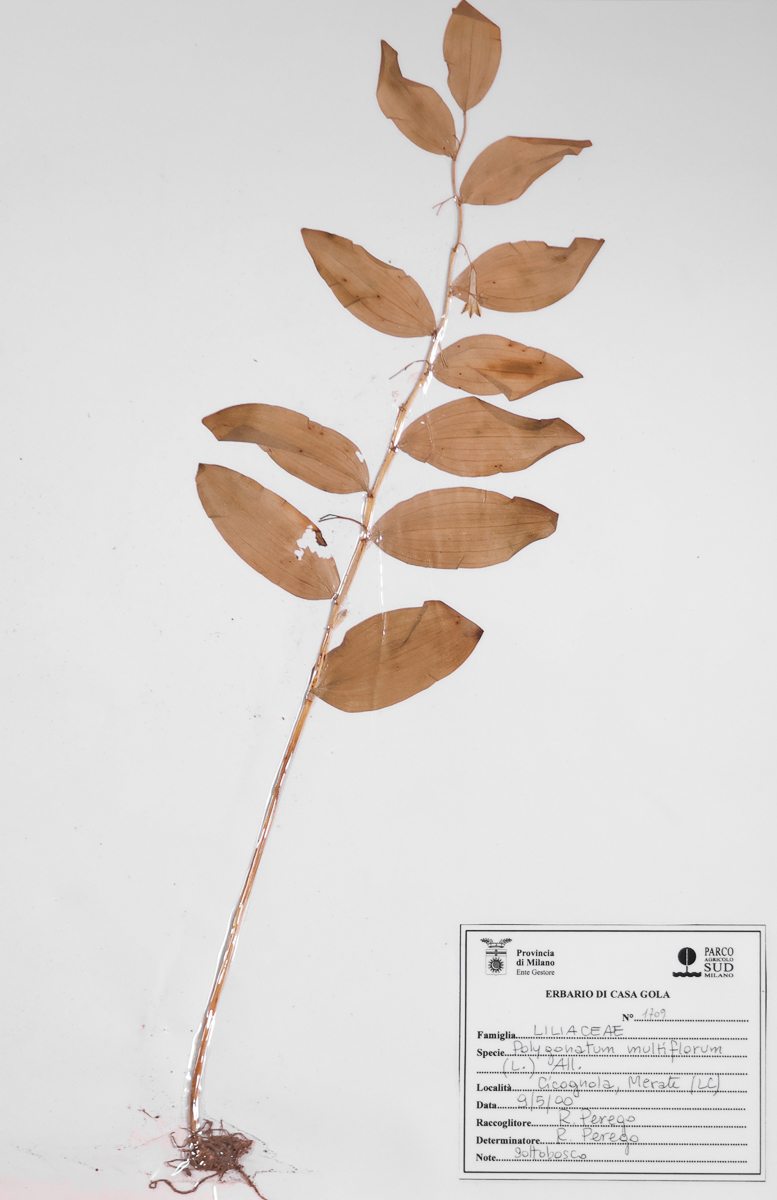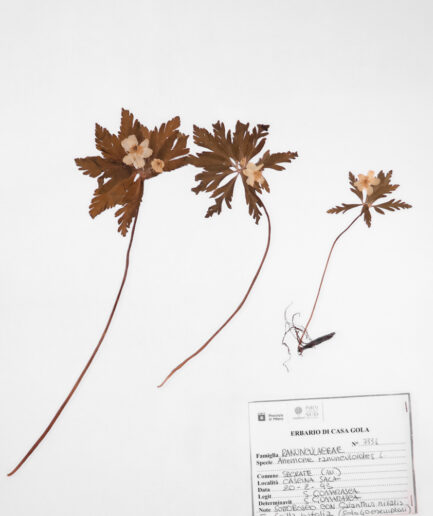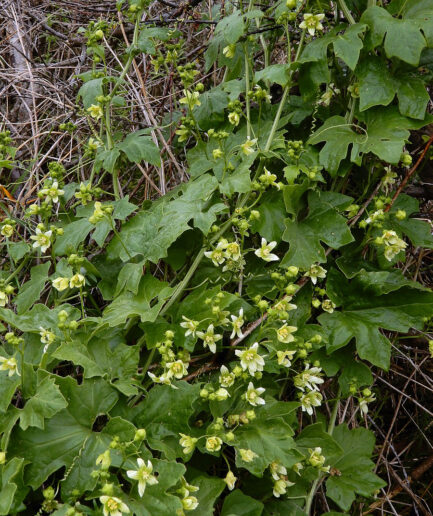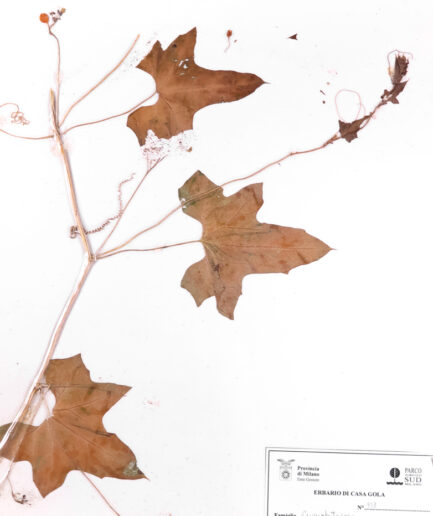Solomon’s Seal
Scientific Name: Polygonatum multiflorum (L.) All.
Family: Asparagaceae
MORPHOLOGY
Habit and dimensions: Perennial herbaceous plant with creeping, horizontal rhizome, whitish in section, with visible scars from previous year’s stems resembling seals; height 20-80 cm.
Stems: Erect cylindrical stems in the lower part, slightly angular towards the top, then arching to touch the ground, up to 1 m long.
Leaves: Leaves, which when young have longitudinally pleated surface, are alternate, elliptical, sessile or shortly petiolate, glabrous, with veins starting from the base, diverging then arched sub-parallelly to converge at the apex, glaucous beneath with entire margin.
Flowers: Small, odorless flowers, grouped in inflorescences usually consisting of 3-5 elements, borne on a single glabrous peduncle (10-12 mm) with short and glabrous pedicels; pendulous, with whitish perianth 2-4 mm in diameter, widening at the top into a funnel and divided at the mouth into 6 pubescent teeth, the 6 stamens have hairy filaments and are enclosed in the corolla tube. Blooms from April to July.
Fruits and seeds: The fruits are capsules with transverse dehiscence, called berries, oval, tiny, and brown, containing 1-2 shiny seeds with concave inner face.
DISTRIBUTION AND HABITAT
Present throughout Italy at the edge of forests, mainly beech and pine forests, in shady places, from 0 to 1,800 m.
USE
Used as a cicatrizing antibacterial and expectorant mainly in veterinary medicine, for coughing in livestock. The rhizome has astringent, anti-inflammatory, decongestant, soothing properties, when sliced it is useful for treating and softening calluses on the feet, and thus removing them without pain. Before taking any plant-based product (medicinal or non-medicinal) for therapeutic or similar purposes, it is always advisable to consult your doctor. The young shoots are edible and can be consumed like asparagus, but caution is always advisable: while the use of P. multiflorum shoots as food is well documented in many parts of Italy, ingestion of parts of the stems (already developed) could cause (mild) intoxication.
INTERESTING FACTS
The berries that appear in autumn, with their inviting appearance, could be ingested by children: they are poisonous.
Photo: under the free license of Saxifraga and Marijke Verhagen, Harry van Oosterhout, Rutger Barendse, Jan van der Straaten





















